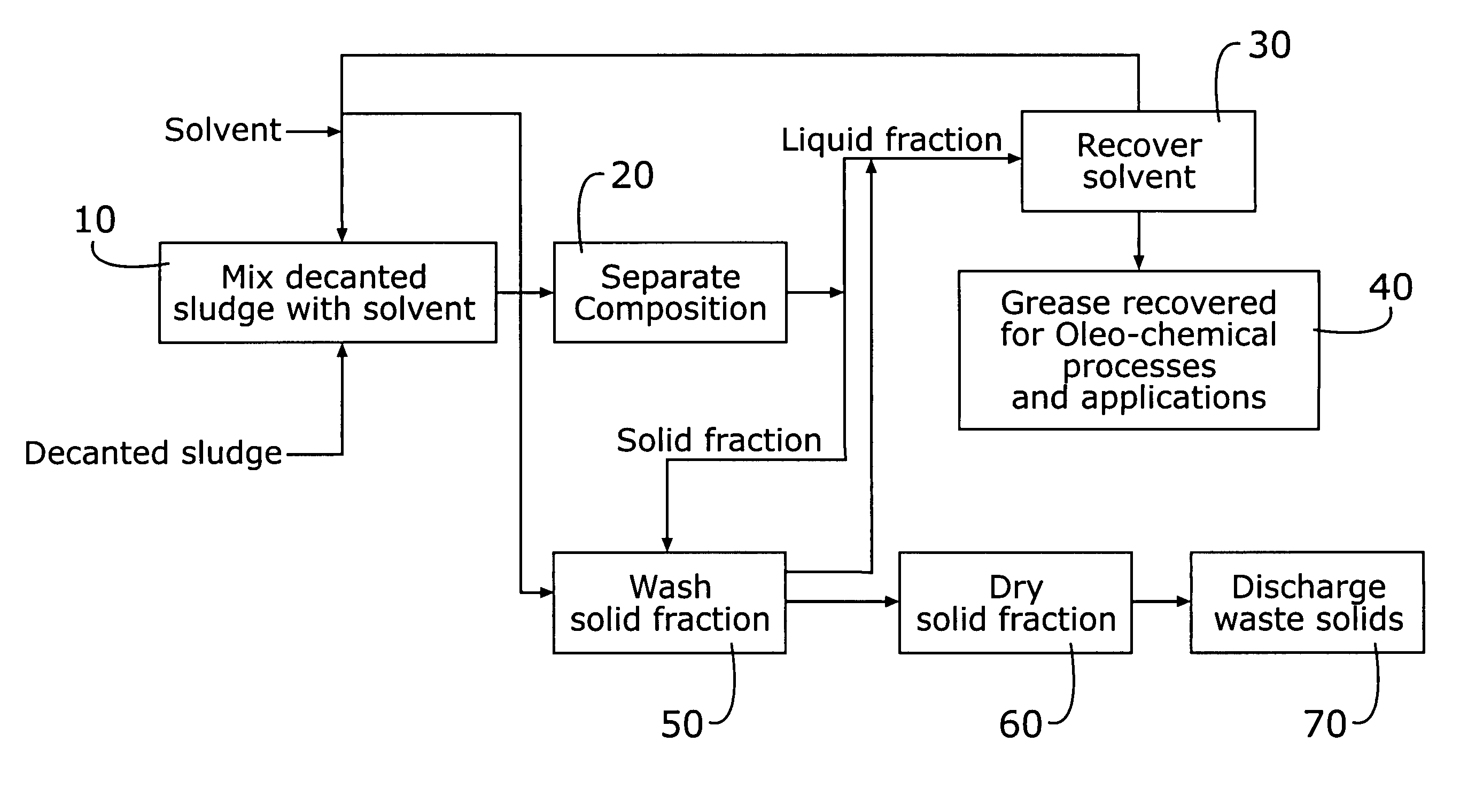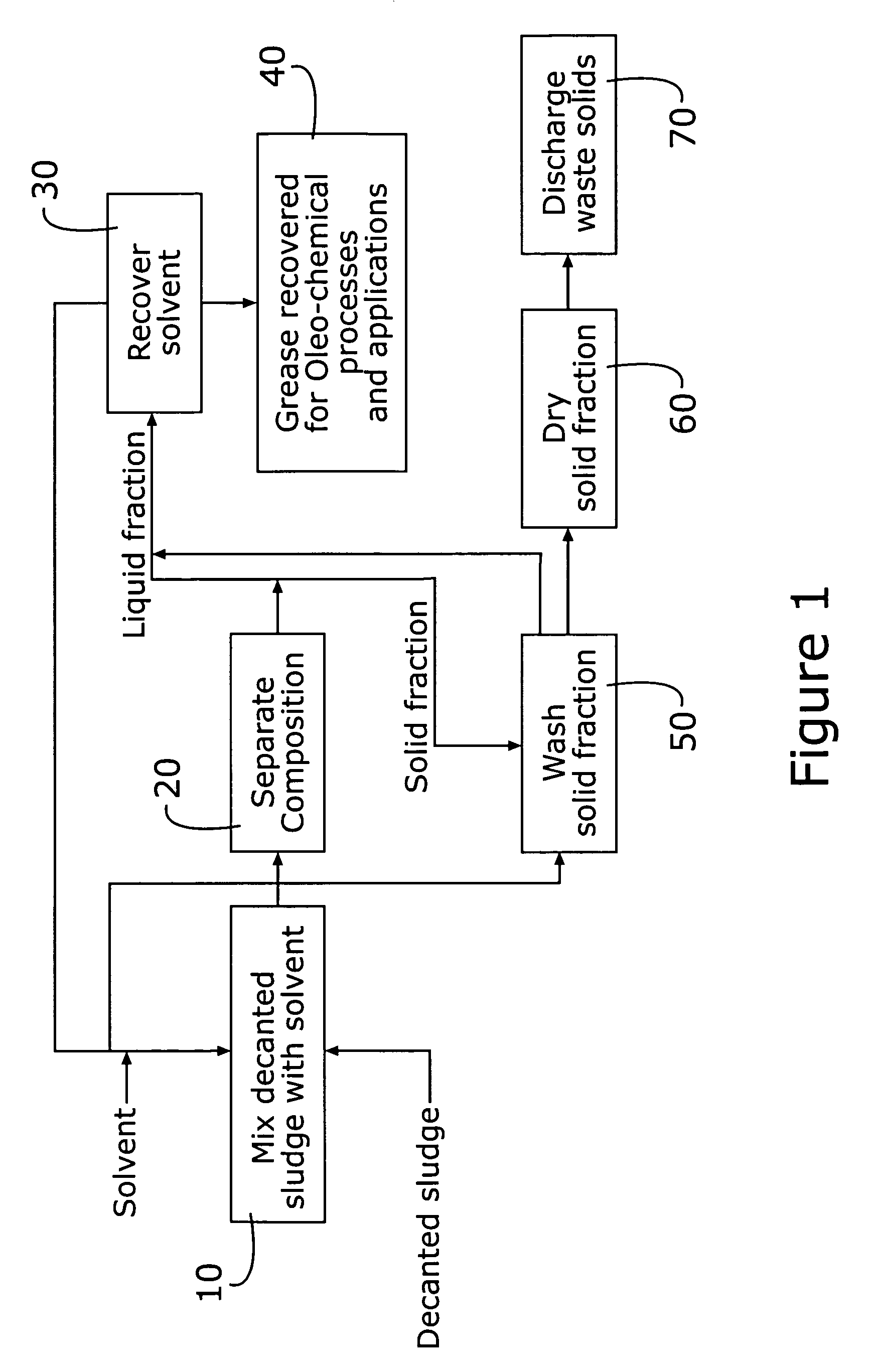Grease trap waste treatment and fat, oil, and grease (FOG) recovery system
a technology of fat, oil and grease, applied in the direction of filtration separation, water cleaning, separation processes, etc., can solve the problems of high cleanup and restoration costs, frequent tank pumping and other expenses, and high expenses, so as to simplify the disposal conditions
- Summary
- Abstract
- Description
- Claims
- Application Information
AI Technical Summary
Benefits of technology
Problems solved by technology
Method used
Image
Examples
Embodiment Construction
[0037]The present invention features a process for removal of organic matter and the recovery of fats, oils, and grease from grease trap waste sludge.
[0038]Referring to FIG. 1, decanted sludge and solvent are mixed, step 10. The percentage (%) of decanted sludge in the solvent ranges from 10 to 90% (w / w), but is limited to 60-90% of the sludge weight. The remaining percentage is composed of the solvent. The solvent may be organic or inorganic, and flammable or non-flammable. Several such solvents can be used in this process including, but not limited to: aliphatic and aromatic solvents and their derivatives; organic acid esters and their derivatives; hydrocarbon petroleum derivatives; saturated and non-saturated hydrocarbons and derivatives thereof, glycerides, ethers, ketones, cyclic hydrocarbons, heterocyclic hydrocarbons, and derivatives thereof, and any other product with good dissolving properties with the raw material.
[0039]The decanted sludge dissolves easily in the indicated...
PUM
| Property | Measurement | Unit |
|---|---|---|
| Fraction | aaaaa | aaaaa |
| Fraction | aaaaa | aaaaa |
Abstract
Description
Claims
Application Information
 Login to View More
Login to View More - R&D
- Intellectual Property
- Life Sciences
- Materials
- Tech Scout
- Unparalleled Data Quality
- Higher Quality Content
- 60% Fewer Hallucinations
Browse by: Latest US Patents, China's latest patents, Technical Efficacy Thesaurus, Application Domain, Technology Topic, Popular Technical Reports.
© 2025 PatSnap. All rights reserved.Legal|Privacy policy|Modern Slavery Act Transparency Statement|Sitemap|About US| Contact US: help@patsnap.com


